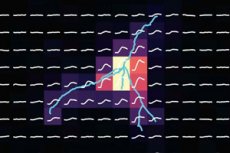New publications
Key brain circuit responsible for female sexual rejection identified
Last reviewed: 02.07.2025

All iLive content is medically reviewed or fact checked to ensure as much factual accuracy as possible.
We have strict sourcing guidelines and only link to reputable media sites, academic research institutions and, whenever possible, medically peer reviewed studies. Note that the numbers in parentheses ([1], [2], etc.) are clickable links to these studies.
If you feel that any of our content is inaccurate, out-of-date, or otherwise questionable, please select it and press Ctrl + Enter.

Researchers at the Champalimaud Foundation (CF) have discovered a key neural circuit responsible for sexual rejection, identifying a group of brain cells that play a critical role in whether a female accepts or rejects mating attempts, depending on her reproductive cycle. The findings, published today in the journal Neuron, deepen our understanding of how the brain regulates social and reproductive behaviour.
Active rejection is not just a lack of consent
In female mammals such as rodents, mating only occurs during the fertile period, while outside this period they actively reject males. Females engage in defensive behaviors such as running away, hitting with their paws, or boxing movements, confirming that rejection is an active action and not just a "passive lack of consent."
"We wanted to understand how the brain switches between these two radically different behavioral states," says senior author Susana Lima, director of the neuroethology lab at CF.
The Key Role of the Hypothalamus
The centerpiece of the study was the ventromedial hypothalamus (VMH), an evolutionarily ancient brain region that controls social and sexual behavior in a variety of species, including humans. The VMH was previously known to be involved in both mate acceptance and rejection, but the mechanisms remained unclear.
Particular attention was paid to the anterior part of the VMH and cells sensitive to the hormone progesterone, the level of which changes during the reproductive cycle.
Observing neurons in real time
Using fiber photometry techniques that allow monitoring brain activity in real time, the scientists observed the behavior of progesterone-sensitive neurons in female mice during fertile and non-fertile phases.
- During the non-fertile phase, these neurons were highly active, coinciding with defensive responses such as paw-striking and boxing movements.
- During the fertile phase, neuronal activity decreased, allowing mating to occur.
"Progesterone-sensitive neurons in the anterior VMH act as 'gatekeepers' controlling sexual aversion," explains study co-author Basma Hussain.
Experiments with neural activity
To test these findings, the scientists conducted experiments to change the activity of these cells:
- Optogenetics: Artificial activation of neurons during the fertile phase resulted in females exhibiting rejection behavior even when they were ready to mate.
- Chemical inhibition: Inhibiting the activity of these neurons in the non-fertile phase reduced rejection but did not make females fully receptive, suggesting the existence of two separate populations of neurons, one controlling rejection and one controlling compliance.
Dual Brain Control
"The brain uses two 'regulators' to balance these opposing behaviors, making the process more flexible to control," Lima says.
This mechanism allows:
- Ensure that mating occurs during the period of maximum probability of conception.
- Minimize risks such as predator attacks or infections associated with unnecessary mating.
Clinical significance
The study also sheds light on pathological conditions such as polycystic ovary syndrome (PCOS), which is associated with changes in the same area of the brain.
"Our findings may help develop new therapies to treat reproductive and social behavior disorders," Lima adds.
Conclusion
"We are just beginning to understand how the brain's internal wiring governs social behavior," Lima says. "These discoveries bring us closer to understanding how neural mechanisms and internal states govern complex social interactions, from sexual behavior to aggression and beyond."
